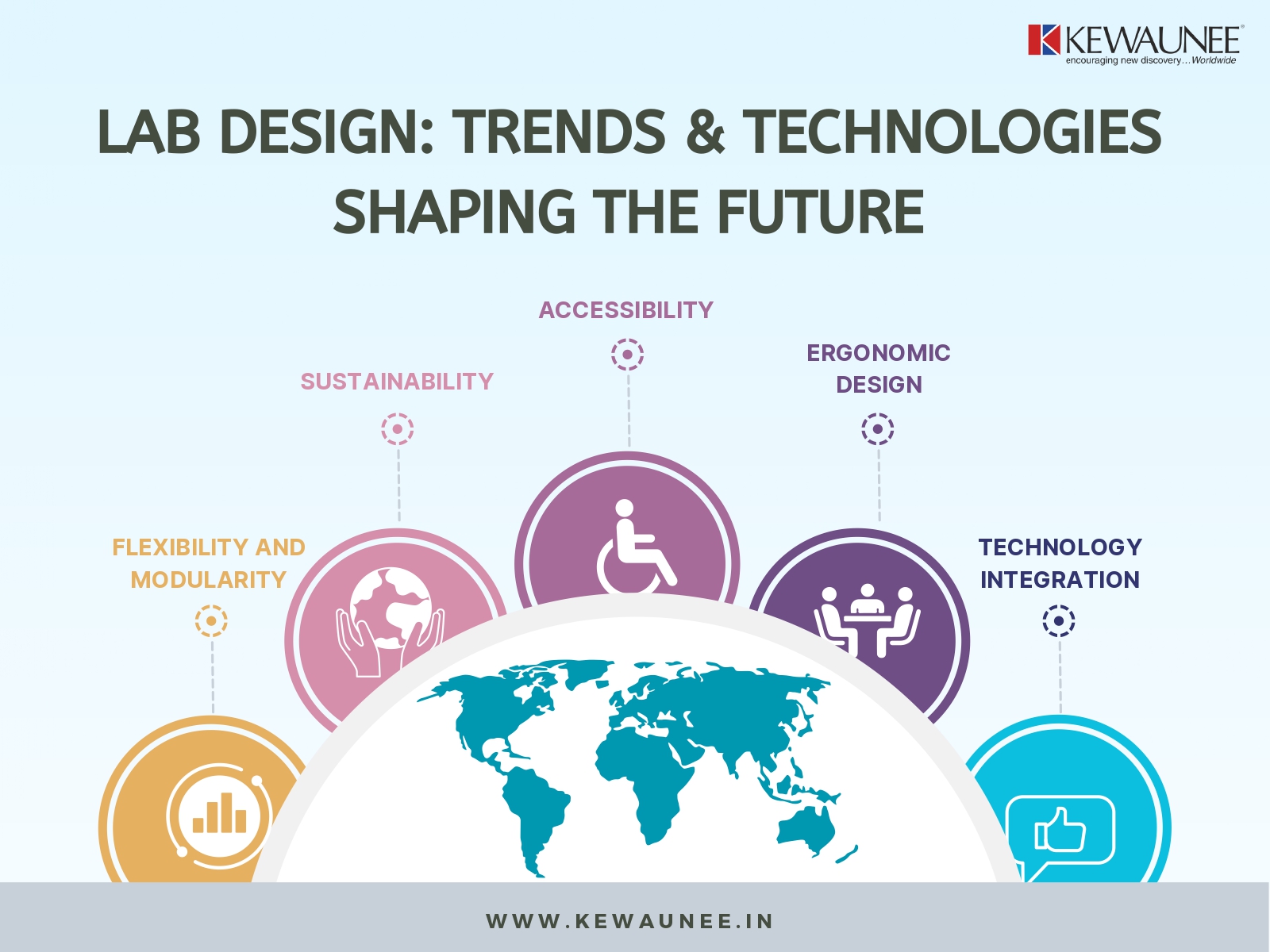Lab Design: Trends & Technologies Shaping the Future
Laboratories are critical settings where research, development, and experimentation take place. Lab design plays a crucial role in promoting worker safety, productivity, and scientific discovery.
This blog will explore the latest trends and technologies shaping the future of lab design, including flexibility and modularity, sustainability, technology integration, ergonomic design, and accessibility.
Flexibility and Modularity
Flexible and modular lab design allows for quick and easy reconfiguration of lab spaces to meet changing research needs. Innovative designs for flexible and modular labs include mobile workstations, storage, and shelving.
These features allow for easy rearrangement of lab equipment and supplies to optimize space usage.
Sustainability
Sustainable lab design promotes environmental conservation and health and safety. Innovative designs for sustainable labs include the use of recycled materials, energy-efficient lighting, and low-emission finishes.
These features help reduce energy consumption and limit the emission of harmful chemicals into the environment.
Technology Integration
Technology integration enhances lab efficiency and productivity. Innovative designs for technology-integrated labs include integrated power and data connectivity, task lighting, and touchscreens.
These features allow researchers to access essential data and information easily and quickly.
Ergonomic Design
Ergonomic design promotes worker safety and productivity. Innovative designs for ergonomic labs include adjustable workstations, chairs, and accessories. These features help reduce the risk of musculoskeletal disorders and increase comfort and productivity.
Accessibility and ADA Compliance
Accessibility and ADA compliance promote worker safety and equal access. Innovative designs for accessible and ADA-compliant labs include adjustable-height workstations, task lighting, and seating.
These features help ensure that all workers, including those with disabilities, can access and use lab equipment safely and effectively.
Future of Lab Design: Emerging Technologies and Trends
The future of lab design will continue to evolve as new technologies and trends emerge. These include the use of virtual and augmented reality, automation and robotics, and smart lab systems that integrate data analytics and AI.
The incorporation of these technologies will allow for greater efficiency, safety, and productivity in lab settings.
Conclusion
In conclusion, lab design is critical in promoting worker safety, efficiency, and scientific discovery. The latest trends and technologies in lab design, including flexibility and modularity, sustainability, technology integration, ergonomic design, and accessibility, provide innovative solutions for enhancing lab environments.
By implementing these design elements, labs can promote safety, efficiency, and sustainability, and advance scientific research and development.
Comments are closed.











